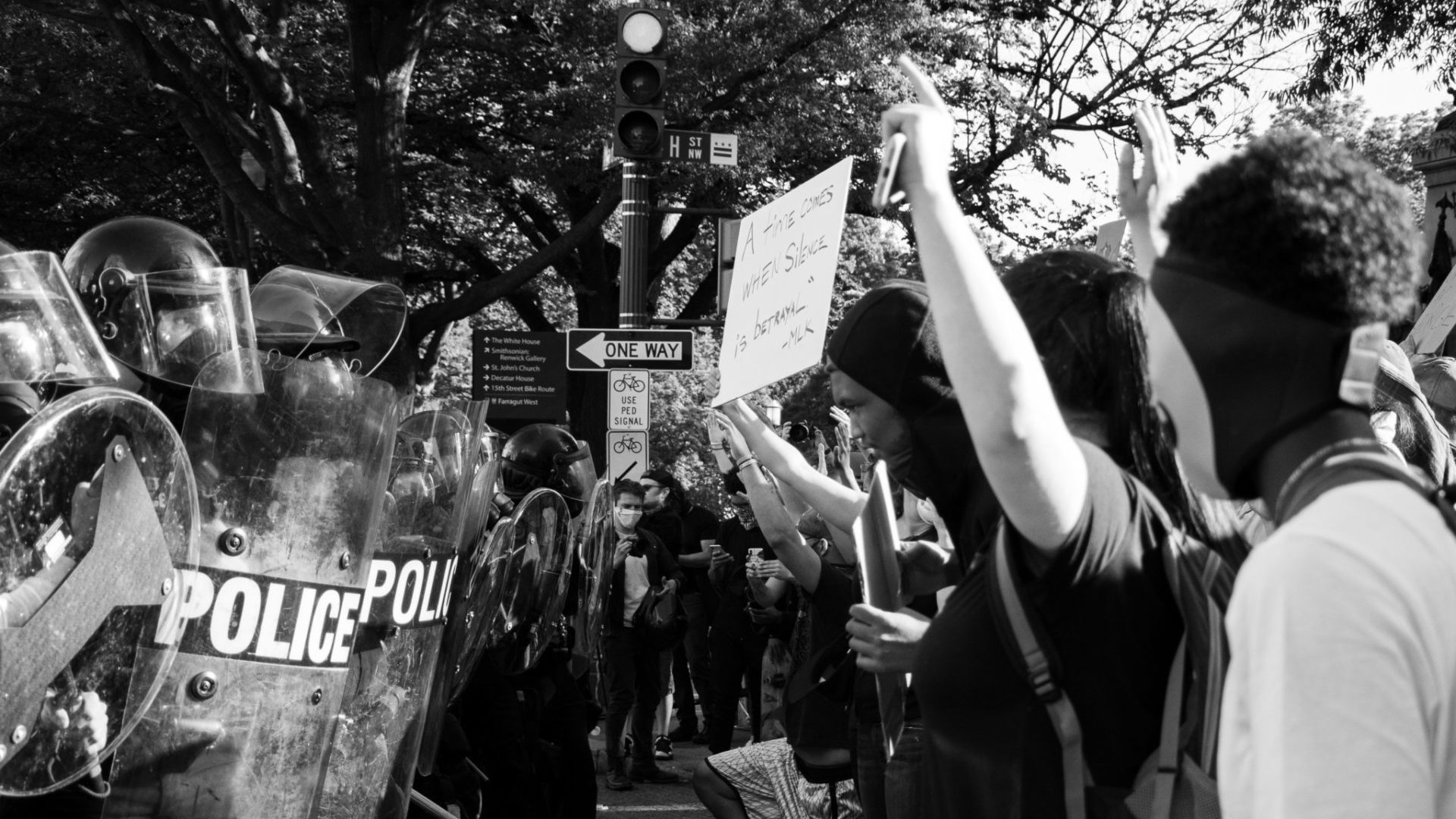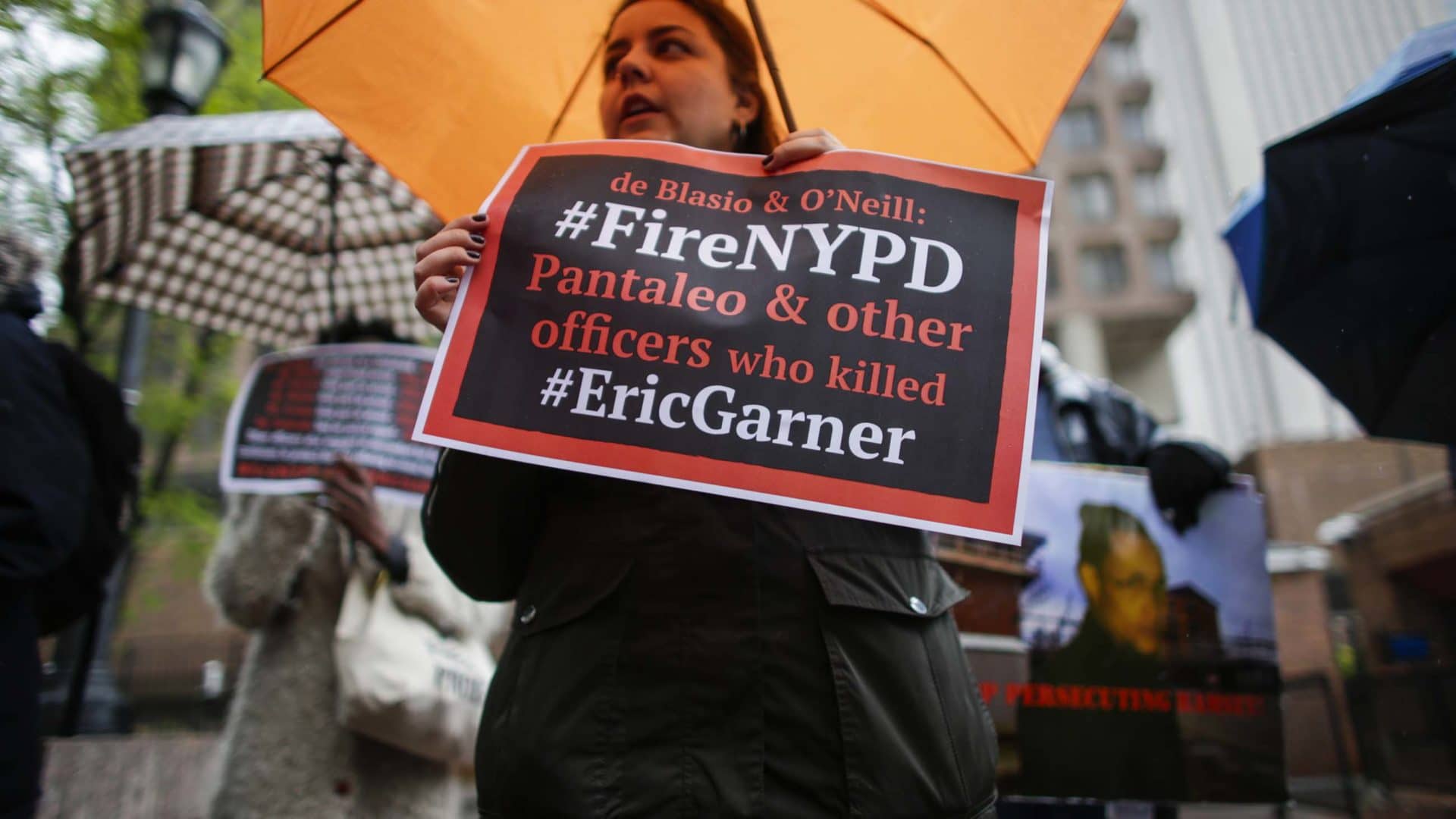The Undark Interview: A Conversation with Brianna Remster
The events of the past few weeks have put issues of racial justice, and the use of force by police officers against Black Americans, in the spotlight. But sociologists and criminologists have been studying these disparities for years, and by now there is a vast literature documenting the unequal treatment of minorities by police forces across the country.
Brianna Remster, who holds a Ph.D. in sociology from The Pennsylvania State University, is an associate professor in the Department of Sociology and Criminology at Villanova University. In her research, she makes use of quantitative studies examining inequalities in criminal justice experiences, including issues surrounding police violence, incarceration, and mental health in vulnerable populations.
While most Undark interviews are conducted by phone or Skype, in this case the interview was conducted by email earlier this month. The interview has been edited for length and clarity.
Undark: In 2017, you wrote that you were “surprised to discover that there have been few systematic analyses of disparities in police use of force.” Is that still the case in 2020? Is your work hampered by a lack of data?
Brianna Remster: Post Ferguson — when Darren Wilson killed Michael Brown — there was an explosion of research. While it’s better than it was, we still do not have the data we should: a national, standardized, and public database of police use of force. Many scholars like myself and my co-author Rory Kramer leverage administrative data, analyzing existing police records on their use of force, to fill the void.
In fact, we’re in the middle of writing a systemic literature review on police-civilian encounters, and we’re impressed with the growth in the field, despite data limitations. For example, Ali Sewell shows that police violence affects the physical health of people living in local neighborhoods, and Frank Edwards, Hedwig Lee, and Michael Esposito estimate that roughly 1 in 1,000 Black men will be killed by police.
UD: One large dataset that was recently made public, and which you and your colleagues have studied, is the set of police reports of “civilian stops” in New York City, which provided officers’ accounts of 3.3 million of these interactions, between 2007 and 2014. As you point out, one result of this data becoming available is that, in 2013, a federal judge ruled that New York’s stop-and-frisk policy was racially discriminatory, and this in turn led to a number of policy revisions. Can you elaborate on the significance of having this data made public? What disparities did you discover?
BR: It is difficult to overstate the importance of police data becoming publicly available, especially given that taxpayers payroll police. This move was not voluntary though; the NYPD were court-ordered to begin keeping these records, requiring officers to fill out a form every time they completed an investigatory stop, known as stop-and-frisk. Once this data was collected, experts working for the plaintiff found racial disparities in who [was being] stopped. The NYPD was required to make this data public as part of the settlement in Floyd v. New York [a 2013 landmark federal class action lawsuit that addressed the controversial stop-and-frisk policies of the New York Police Department], and other cities have since made similar data publicly accessible due to similar settlements or, even better, in the interest of transparency.
Analyzing this NYPD investigatory stop data — that includes whether police used force during the encounter — my colleague Rory Kramer and I found that Blacks are more likely to experience police violence (any force as well as potentially lethal force) during a stop than White civilians when other relevant factors are held constant, including the stopped person’s demeanor, whether evidence of criminal activity was uncovered, and local neighborhood context.
Further, consistent with racial stereotypes of Blacks as criminal, this racial disparity persisted when we limited our analyses to encounters that resulted in an arrest or seizure of contraband (drugs or guns). That is, when police uncover evidence of criminal behavior, Blacks were more likely to experience use of force in the process than Whites. George Floyd is a case in point. We also found though that even when no potential culpability existed, Blacks were still more likely to be subject to police violence than Whites.
UD: You found troubling disparities concerning Black youth in particular. Can you summarize those findings?
BR: We find that the racial disparity in potentially lethal force is magnified among young folks when the stop results in an arrest or contraband is located — and I should note that this method, if anything, is biased toward finding no racial disparity. Dean Knox, Will Lowe, and Jonathan Mummolo argue that once we correct for the bias in who is stopped (let alone who is arrested), the racial disparity in police use of force might be twice as large.
Even still, when Black kids are found in violation of the law during stops, they are more likely to experience potentially lethal force than White kids as well as older Blacks and Whites.
UD: One thing that seems to be plentiful is video-recorded footage of individual incidents. Scientists often draw attention to the distinction between “anecdote” and “data” — and yet, hundreds of video recordings that capture police using force, particularly on Black Americans, certainly seems to add up to something. As a sociologist, what can you say about the role of these video recordings?
These video recordings are largely why the racial disparities in police violence became a national debate in recent years. Because we live in a very segregated society, it was difficult for many White Americans to understand how brutal policing can be for Black people. The behavior being recorded is not new — police brutality has been the touchstone for racial unrest for generations in the U.S. — but technology made it visible to Americans who were otherwise able to avoid reckoning with it.
Although the growing number of videos is helping Americans grasp the direness of the situation, they are likely only the tip of the iceberg. Most encounters are not recorded, despite the growth in body cameras. What’s perhaps most disturbing is thinking of how many cases aren’t filmed and don’t become part of the public debate.
UD: You have written, “Conversations need to shift from whether there are racial disparities in policing to what can be done to reduce or eliminate racial disparities in policing,” and you note the move toward increased use of de-escalation techniques and implicit bias training. Can you say at this stage whether these techniques are having the desired effect?
BR: Three years later, we now know that many popular reforms have not had the intended effect. As Rashawn Ray recently explained, bad apples come from rotten trees. Efforts like changing police trainings and policies may help some apples from going bad, but it doesn’t solve the problem of rotten roots. The Minneapolis Police Department had implemented most of those, including revising its training, working on community relations, and implementing body cameras. In many ways, Minneapolis was being upheld as a model for other cities after becoming one of six cities to pilot the National Initiative for Building Community Trust in Justice in 2015. And Minneapolis is not alone: Many major cities made similar changes in recent years.
As a result, calls to defund the police have eclipsed those incremental reforms and are rapidly gaining traction. Interested readers should check out Alex Vitale’s work. The basic idea is to shift funds away from police toward areas like health care and housing. Changes in this vein are already occurring around the country; to stick to the Twin Cities, the University of Minnesota severed ties with the Minneapolis Police Department last week, and the city’s schools followed suit.
Although reducing the size and scope of police might be new to many Americans, abolition scholars and activists have been emphasizing such approaches for decades, and in fact many countries around the world already use some form of it. My own work supports such a move; when the NYPD dramatically reduced the number of investigatory stops annually, instances of police violence also tanked. Not surprisingly, the less contact police have with civilians, the less chance there is of escalation. Importantly, we can implement changes like this without sacrificing public safety, as studies show that stop-and-frisk does not reduce crime.
UD: The events of the last few weeks have included country-wide (indeed, international) protests on a scale that I don’t think we’ve ever seen before. And the Minneapolis City Council recently pledged to disband the city’s police department and replace it with a new system focused on public safety; as The Guardian put it, this is “a historic move that comes as calls to defund law enforcement are sweeping the U.S.” What’s been going through your mind these past few days? Has some sort of tipping point been reached?
It is indeed a historic moment, spurred by the global pandemic that has had particularly devastating effects for people of color. Covid-19 is killing Black Americans at a higher rate than Whites and subjecting Blacks to historically high rates of unemployment. People are dying and can’t pay their bills. The deaths of George Floyd and Breonna Taylor at the hands of police were like lighter fluid thrown on a fire.
In the past few years, we’ve seen renewed public interest in criminal justice reforms. Many jurisdictions are using data-driven approaches, which is a researcher’s dream come true. But it’s also a type of incrementalism that this week has betrayed as inadequate — the same cities that have introduced data-driven reforms are some of the ones with the most powerful protests. These cities also experienced some of the ugliest, most violent responses from police, exposed in the wave of viral videos revealing hundreds of cases of police brutality against protestors around the country.
Still, Minneapolis’ announcement to disband their department took my breath away. What comes next, though, is critical. We have Camden, New Jersey as a case in point. They disbanded their department in 2012, but it was not a step toward defunding nor abolishing police, even as some say it is. They replaced it with a force that had more instances of force and arrests than the previous one. I am hoping that Minneapolis draws on data, their residents’ views, and alternative models when deciding what is next.











